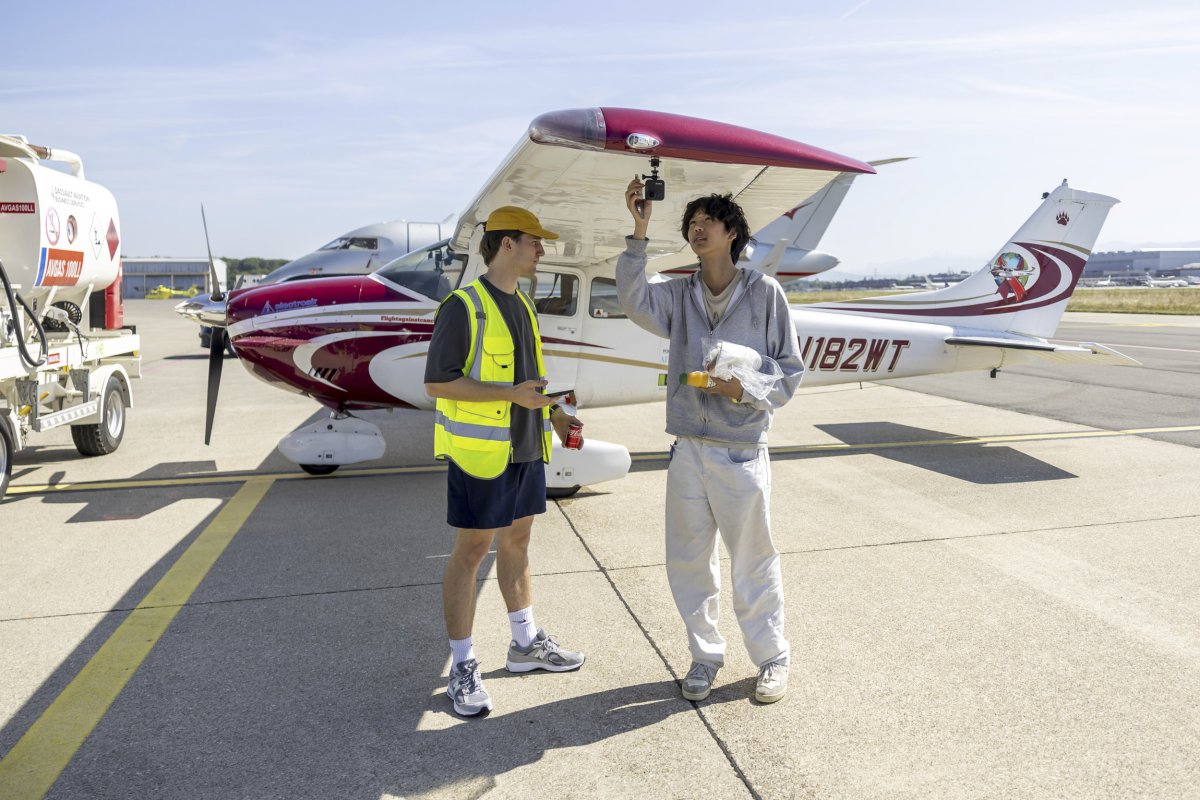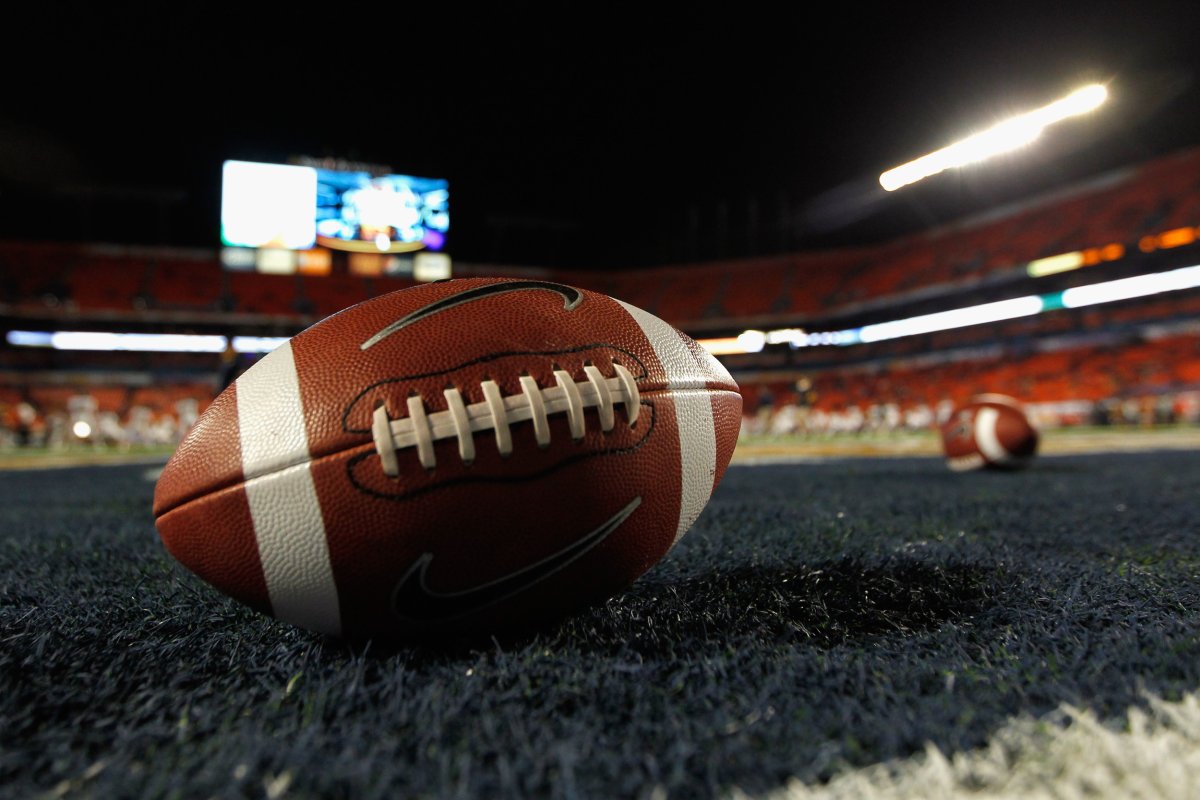-
DraftKings Promo Code: Claim $300 Bonus For Any NFL Week 1 Sunday Game - 17 mins ago
-
Thrust Into the Line of Fire, Iranians Worry About What Comes Next - 32 mins ago
-
Stephen A Smith Doesn’t Hold Back on Kawhi Leonard - 52 mins ago
-
A World War II Dispute Between Ukraine and Poland Is Put to Rest - about 1 hour ago
-
Teen Influencer Released After Months in Antarctic Air Base With $30K Fine - about 1 hour ago
-
Trump Sends Mixed Messages With His Newly Rebranded Department of War - 2 hours ago
-
How to Watch UL Monroe vs Alabama: Stream College Football Live, TV Channel - 2 hours ago
-
How to Watch Southeastern Louisiana vs Murray State: Live Stream NCAA College Football, TV Channel - 3 hours ago
-
Air Canada Flight Attendants Overwhelmingly Reject Proposed Contract - 3 hours ago
-
Vikings’ Justin Jefferson Has Strong Words on Packers, Micah Parsons Trade - 3 hours ago
Amtrak Launches ‘New Era’ Of High-Speed Trains
Amtrak launched its new NextGen Acela high-speed trains capable of 160 mph on Thursday, saying “the future of high-speed rail starts now,” but there will be little change in travel times.
The first major upgrade to Amtrak’s premium service since 2000 is more about comfort, service and increased capacity, because the current tracks used will not allow the trains to reach their full potential.
Departures began early Thursday morning, with the first trains leaving Washington, D.C. at 5:00 a.m. and Boston at 6:00 a.m. Eastern time, according to a press release from Amtrak.
Newsweek contacted Amtrak for more information via email.
Why It Matters
The debut of NextGen Acela marks the first time new high-speed trainsets have entered service in the Northeast Corridor in 25 years. The trains’ 160-miles-per-hour potential means they meet international definitions for high-speed rail, which is 155 miles per hour (250 kilometers).
Serving more than 500 destinations across the Amtrak network, the corridor between Boston and Washington, D.C, remains the company’s most heavily trafficked route, serving millions of riders annually.
What to Know
The new Acela fleet features free 5G-enabled Wi-Fi, individual power outlets and reading lights, upgraded seating, and an enhanced food and beverage service via Cafe Acela. Each train offers 27 percent more seating capacity than the legacy Acela models.
The new trains are faster, capable speeds of up to 160 miles per hour, while most of Amtrak’s current rolling stock is gated at 125 miles per hour. But the routes announced for the new trains will run at roughly the same speeds between Washington and New York.
According to Forbes: “Due to older and shared tracks in the Northeast Corridor, neither the old nor the new Acela trains reach these top speeds most of the time, making total travel times longer than in other places that operate the same level of high-speed rail.”
Instead, the new fleet are meant to reduce stress on the current stock by increasing services and reducing strain.
Weekday service initially includes four designated trains: 2153, 2154, 2170, and 2173. Weekend schedules include additional offerings, with full deployment of 28 new trainsets expected by 2027.
The new Acela trains were built in the U.S. at Alstom’s Hornell, New York facility and include components from 180 suppliers in 29 states. Amtrak said the program has supported approximately 15,000 U.S. jobs.

Amtrak
In addition to the train launch, Amtrak and the U.S. Department of Transportation announced that construction will begin on a full transformation of New York Penn Station by the end of 2027.
The project will be led by Amtrak in coordination with federal partners, aiming to convert the existing facility into a modern, safe, and efficient transit hub.
“The transformation of New York Penn Station is underway, and USDOT and Amtrak are strongly committed to beginning construction by the end of 2027,” said Amtrak Special Advisor Andy Byford, according to the transformation timeline.
He praised the support of President Donald Trump and Secretary Duffy for bringing “urgency and clarity” to the project.
What People Are Saying
Amtrak President Roger Harris said in a statement: “Acela is synonymous with American high-speed trains, and today marks a new era of next-generation service.
“On behalf of everyone at Amtrak, I’m proud to welcome you aboard NextGen Acela. The future of high-speed rail starts now.”
Amtrak Board Chair Tony Coscia said: “From the moment our guests step onboard, they’ll feel the difference of a NextGen Acela train thanks to a more modern, premium, and elevated experience.
“We are grateful for Secretary Duffy and Deputy Secretary Bradbury’s support on the project, and for helping it get over the finish line so Northeast Corridor residents and visitors can enjoy a whole new way to travel.”
What’s Next
As Amtrak scales up the NextGen Acela service and pushes forward on infrastructure upgrades, the company says it is positioning itself to meet rising demand for modern rail travel in the U.S.
Source link










